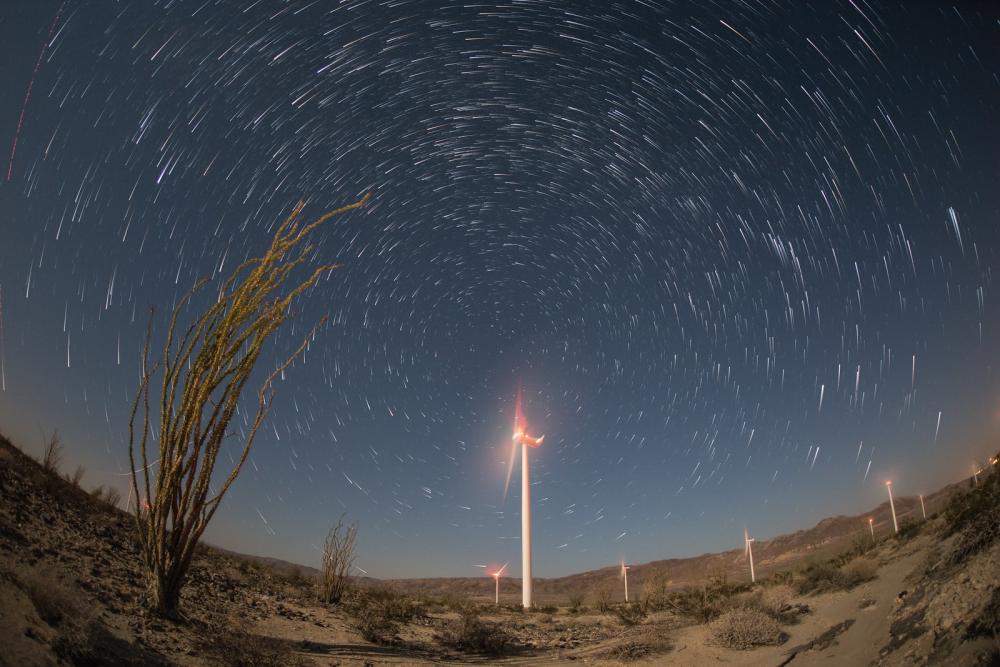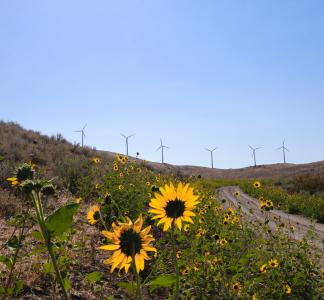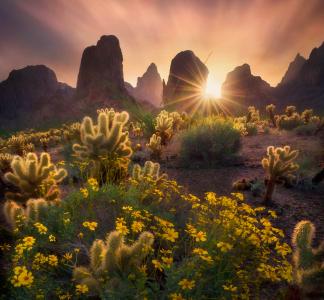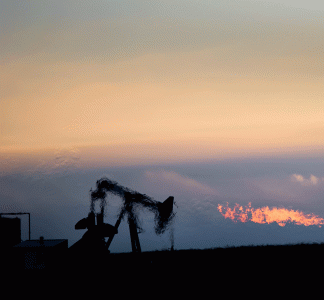A vision for responsible renewable energy on public lands

Renewable energy development in the California desert
Tom Brewster Photography
Smart planning is crucial for renewable energy projects
Our public lands and waters have some of our nation’s best solar, wind and geothermal resources, but they currently account for less than five percent of clean energy capacity in the U.S. There’s tremendous opportunity for growth and it’s time to tap into that potential. Congress recently passed legislation setting a target of permitting 25 gigawatts of renewable energy on public lands by 2025—a threefold increase in the projects approved to date and enough to power over 10 million homes.
Carefully located renewable energy development on public lands can help boost local economies, provide new job opportunities across a range of skill levels and generate additional revenue streams for state and local governments. At the same time, these projects can combat climate change and this smart approach will protect our most sensitive lands, wildlife habitat and cultural resources. Serious investments in energy conservation, efficiency and rooftop solar, and other distributed renewable energy generation are also needed to ensure a truly sustainable clean energy future.
For too long, energy development of any kind on our public lands has been characterized by controversy and unnecessary conflicts and impacts. Smart planning approaches are needed to recognize that some places should not be developed—places with important wildland and wildlife values and places of cultural, historical and spiritual significance for communities—and guide clean energy developments elsewhere. “Smart from the start,” responsible development is also crucial to ensure we can meet our 30 x 30 conservation and net zero climate change goals.
Smart from the start planning
-
Find appropriate locations and ensure public input
Identify pre-screened, lower-impact zones for development and incentivize projects within them—using a process that prioritizes comprehensive tribal consultation and input from all stakeholders, especially local and traditionally underrepresented communities and Black, Indigenous and People of Color.
-
Protect irreplaceable wildlands
Avoid development in areas with important wildlife habitat, wildlands and cultural resources, and protect those areas.
-
Offset impacts
Offset impacts that can't be avoided with investments in habitat restoration and protection.
A strong climate plan for public lands will ensure we develop the renewable energy we need while protecting the places we love. The United States can and should play a global role in leading the energy revolution and building a new clean energy economy. As public leaders work to justly transition the nation to clean, renewable energy, they should cement a modern “smart from the start” approach to energy development that includes increasing the efficiency of permitting renewable energy projects, reducing costs and conflicts, and maintaining and enhancing the full value of resilient landscapes.

We should develop the renewable energy we need while protecting the places we love.
slworking2/Flickr
To ensure our public lands contribute fully to a clean energy future and vibrant green economy, while conserving land and water for wildlife and communities, our leaders must:
Ensure the economic benefits of renewable energy development are equitably shared
Renewable energy on public lands is already providing important economic benefits. Leaders should prioritize supporting the creation of new economic growth through renewable energy development, including for rural communities with limited economic opportunities and as part of a strategy to help communities that are currently dependent on fossil fuel production to diversify their economies.
Given the differences in staffing requirements between the fossil fuel energy sector and the renewable energy sector, especially for long-term operations and maintenance jobs, truly comprehensive transition plans will likely require job training and investment in sectors beyond renewable energy alone. Communities that have suffered the worst adverse impacts from the extractive economy should be prioritized for the benefits of the clean-energy transition. Transition should be used as an opportunity to build household and community wealth in these communities.
Industry and decision makers should also prioritize local hiring for not just construction and operation of renewables projects but also for other efforts associated with project development such as community development grants, building local parks and measures to mitigate impacts such as wildlife habitat restoration.
We must also ensure the impacts of renewable energy development do not disproportionately affect Black, Brown and Indigenous communities, and working-class communities of all backgrounds. This includes economic impacts from transitioning away from fossil fuels, as well as any environmental or public health impacts from renewable energy development.
Fully fund federal renewable energy programs
Financial backing for renewable energy programs developed by the Department of the Interior (DOI) and the Bureau of Land Management (BLM) is critical to ensure our public lands remain a key part of transitioning to a clean energy future. Despite their importance, the BLM’s renewable energy program budget has remained mostly flat over the last six years and was actually reduced by 16% in the fiscal year 2019.
Prioritize efficient permitting in lower-impact areas and designate new zones in key states
About 700,000 acres of public lands have already been identified as appropriate for renewable energy development. Existing solar and wind energy zones in the southwestern states are excellent locations for new projects, but the BLM must do more to facilitate development within them. That includes delivering on efficient and timely permitting process, increasing financial and other incentives for development and ensuring transmission upgrades provide access to them.
One key way the BLM should increase transmission access to renewable energy zones is by completing its review of the West-wide Energy Corridors, a system of pathways for transmission lines on public lands around the west. BLM should publish its Final Report for the review, and then update its land use plans to improve the locations of the corridors, shifting them out of sensitive natural and cultural resources and ensuring they connect to renewable energy zones.
Federal and state agencies must also coordinate to identify new priority development areas in key states such as Nevada and Wyoming, and pair this work with planning for needed transmission lines. A wide array of stakeholders, frontline communities, native and indigenous nations, industry and others must be at the table for the discussions and decisions about where and how future development will occur. Badly sited projects can threaten conservation values, and the BLM should protect key wildlands, wildlife habitat and cultural resources from development of any kind.
As noted above, one state where additional “smart from the start” planning is needed is Nevada. The Governor, BLM, state legislature, Native American Tribes, local elected officials, industry, NGO groups, frontline communities and others should build on the “smart from the start" strategy in the Governor’s State Climate Strategy, planning ahead for upcoming infrastructure investments as the state ramps up renewable energy development. This includes planning ahead to address the large new proposed Greenlink West transmission line between Reno and Las Vegas and associated solar development that would occur at its substations along the route; addressing ongoing pressure for solar development in southern Nevada; and identifying lower-impact, priority development sites in other areas of the state where renewable energy development is increasing.
Pass legislation to facilitate responsible renewable energy development and conservation investments
If passed, the Public Land Renewable Energy Development Act (PLREDA) legislation would promote responsible development of solar, wind and geothermal energy resources on public lands by directing DOI to identify additional priority development areas in places with high energy potential and lower impacts on wildlife, habitat and other resources. It would also share revenue from wind and solar development with counties and states and with a new conservation fund. We are pleased that this legislation has been reintroduced in the House and hope to see it move swiftly through Congress.
Repower mines and brownfields sites with renewable energy
By facilitating the redevelopment of mines, landfills and other contaminated sites with solar, wind and geothermal energy, federal and state agencies and Congress can increase renewable energy development while reducing pressure on undeveloped “greenfield” sites.
For example, a solar project constructed on mine tailings at the Chevron Questa Mine Superfund site is now powering 150 homes. The project provided local jobs in Questa, New Mexico, and Chevron Mining also partnered with stakeholders to restore Eagle Rock Lake, a recreation area valued by the community.
The Wilderness Society is currently helping develop federal legislative proposals to facilitate repowering mines and brownfield sites with renewable energy. We are also working in partnership with The Nature Conservancy and Rocky Mountain Institute to advance opportunities in Nevada under an initiative called Mining the Sun.
While solar, wind and geothermal development on public lands has increased in recent years, there is great potential for additional responsible development. Building on this progress will require the continued funding and implementation of the DOI renewable energy programs; cooperation between government, Native American tribes, industry, conservation groups, and other stakeholders; and bipartisan congressional support to ensure legislation and policies remain up-to-date. Working together, we can help guarantee continued success for the development of the nation’s renewable energy resources and protection of our natural and cultural heritage well into the next generation.



